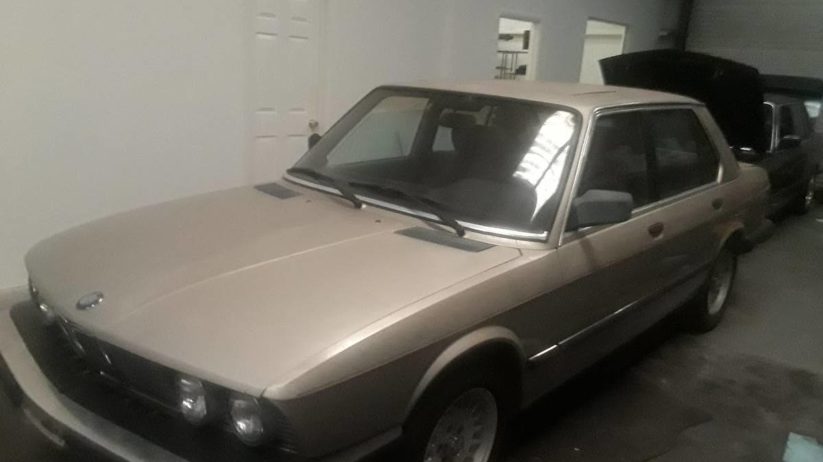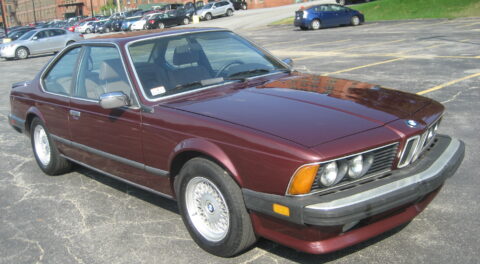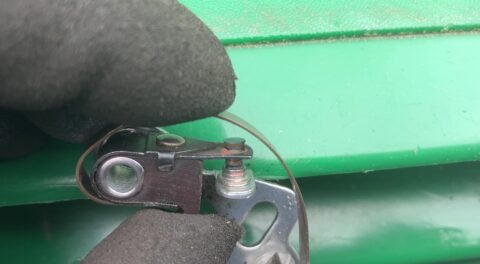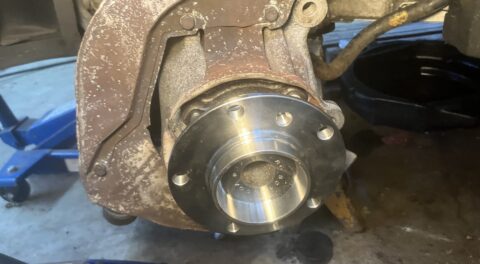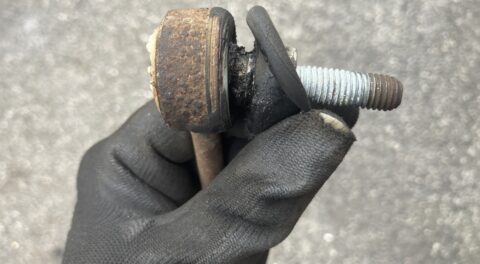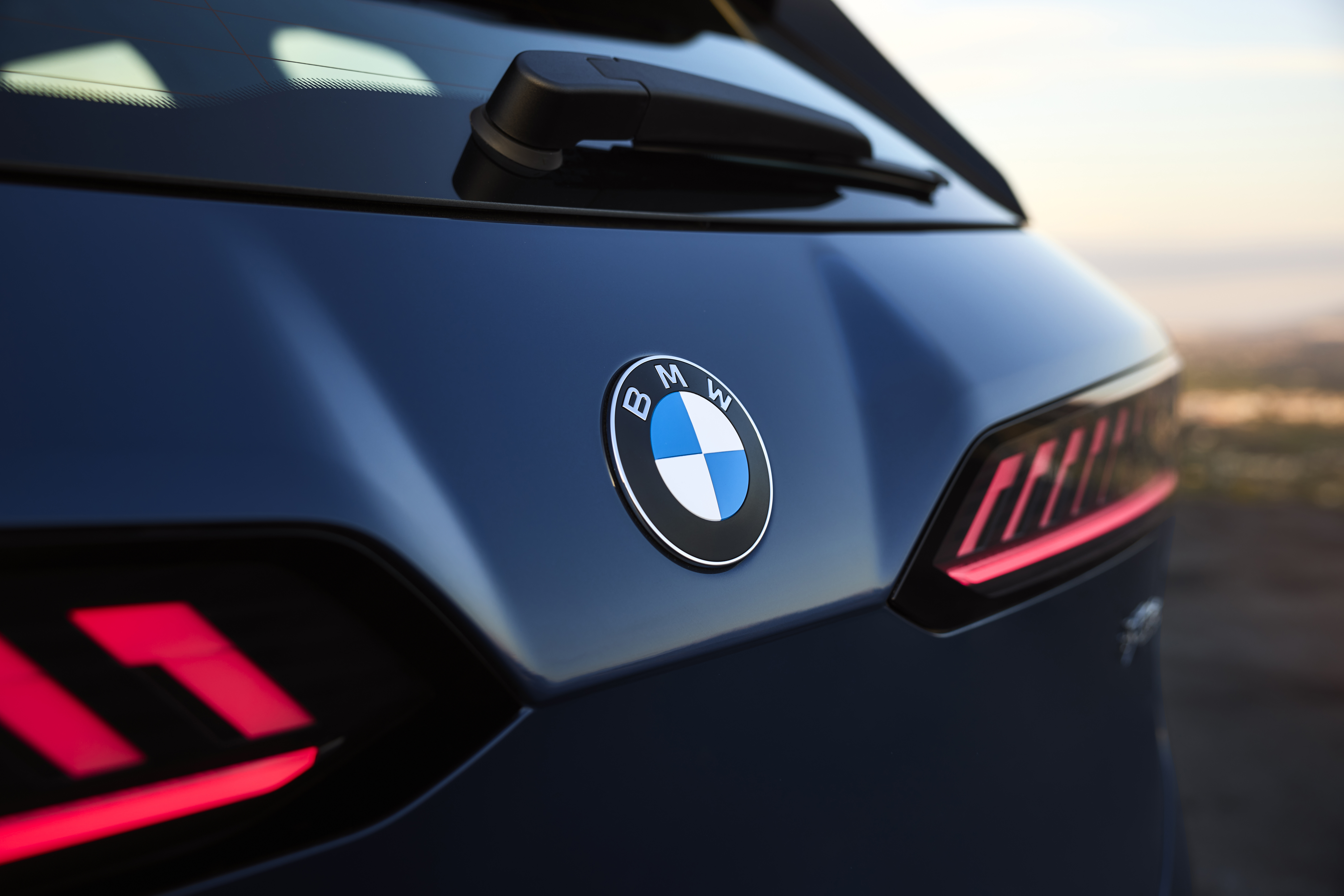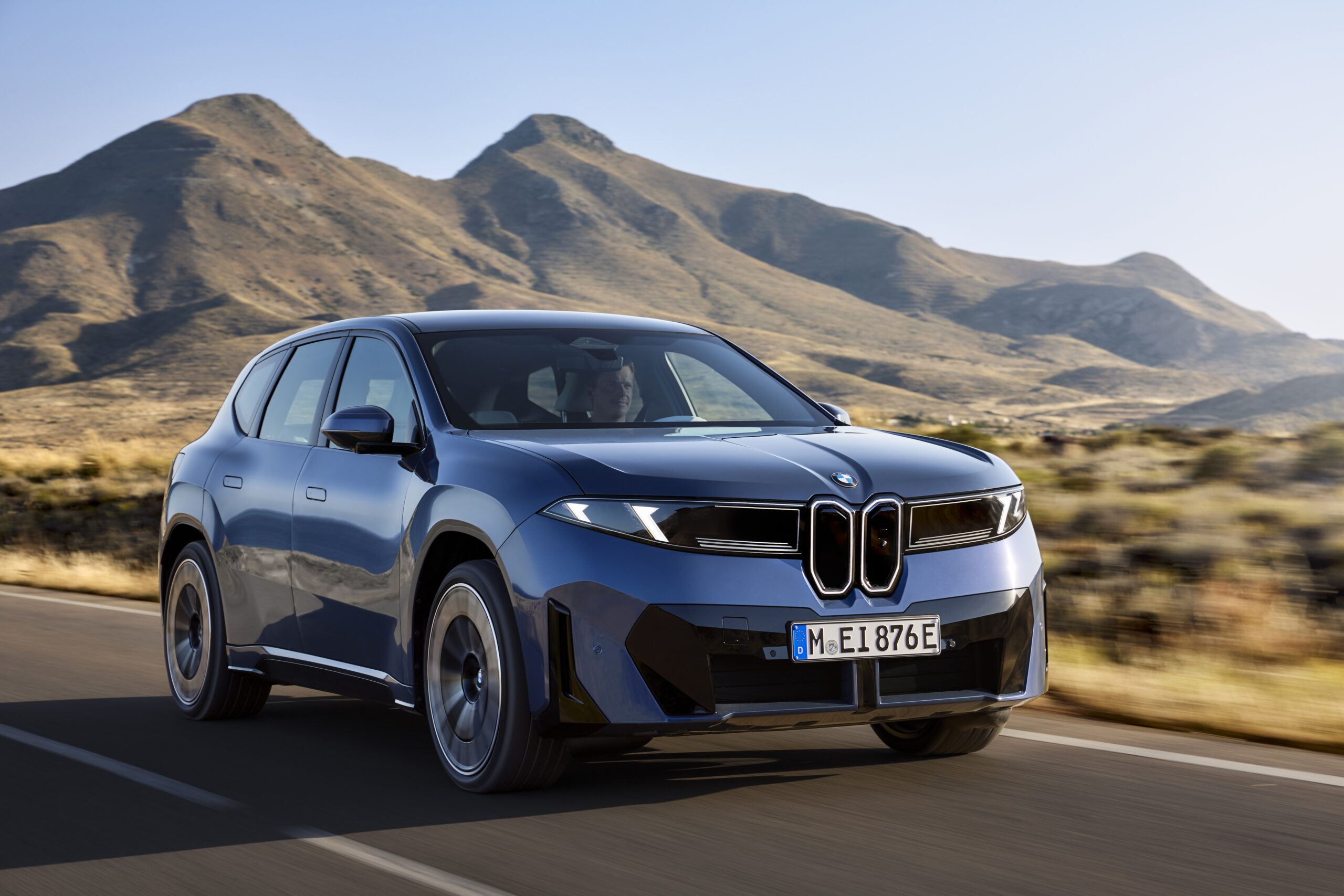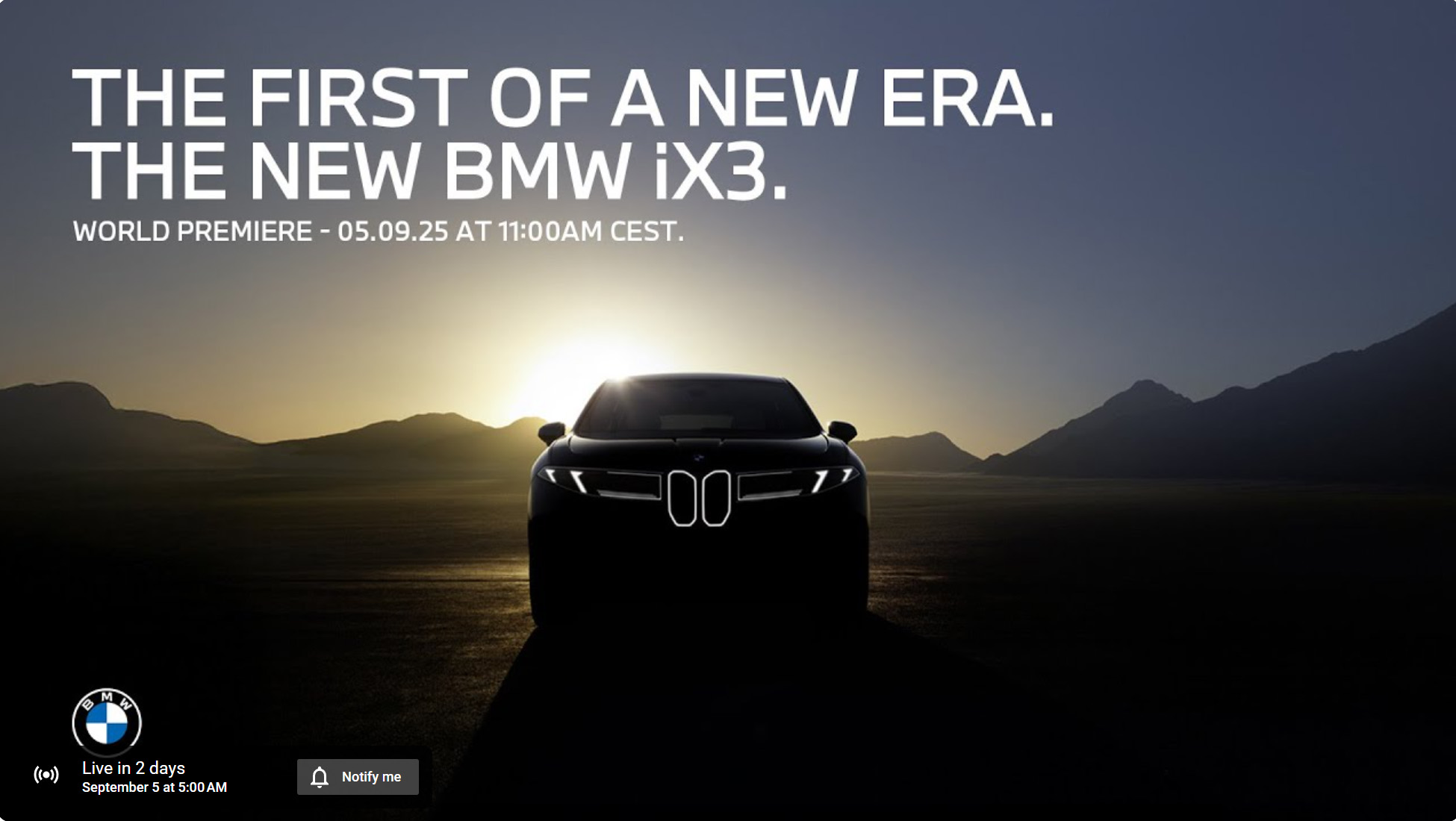I expected to be writing this week’s piece on the brief road trip I took last weekend in Bertha, my retrieved-and-refurbished honeymoon 2002, and how almost nothing went wrong.
But then something most surprising happened.
Those of you who follow me on Facebook know that last week I went on a bit of a bender searching for cars. Perhaps it was that Bertha had reached the point where her punch list was getting pretty short, and I was instinctively looking for the next project. Perhaps it was that I was continuing to make a career out of avoiding the dead Lotus Europa glowering at me from the corner of the garage.
Whatever the reason, for several days, I pounded incessantly on the Interwebs, trying to dislodge something. I posted the stupid stuff on my Facebook page: a VW squareback with no engine but a gloriously flamed hood, a bagged and slammed ’63 Rambler wagon with an LS conversion, a ’37 Nash Ambassador project car awaiting a modern drivetrain, etc. This was mostly just for sport, but there’s a part of me that thinks I should branch out, buy an early-’60s American car, maybe even a mid-’30s car right at the transition point from the boxy Model A-style body to those gorgeous big fresh-looking curves.
But then I ask myself: Other than fire it up on a Sunday morning to run to Trader Joe’s for cereal and an occasional cars-‘n’-coffee, what would I actually do with a car like that? Would I go to local marque-specific events? Would I join a club? Would I drive thousands of miles as I do to hang out with my family of lovable BMW nutcases? And really, when push comes to shove, would I take the risk, buy it remotely, and do a Ran When Parked on a model I don’t know for beans and have no parts network for?
For these reasons, these non-BMW virtual dalliances were mainly flights of fancy, and my real focus remained mostly on the usual blue-and-white suspects. I continued to look for the elusive affordable six-speed 850i. The Great White Six-Speed Shark that I passed on two years ago actually showed up on Facebook Marketplace, just as needy as it was when I last saw it, only for more money. I passed again. I continued to look for an E23 stick. I unearthed an ’83 Euro 735i in Rochester NY, but the seller was non-responsive. And 2002s, of course—but since I already have three, something would need to be awfully well-priced for me to pick up another one.
Really, I was most interested in an E30.
You may recall that I had a nice one, a bone-stock ’87 325is that I sold for what was then the eye-popping price of eight grand back when I bought Louie, the ’72 tii, twenty months ago. These days no one bats an eye at that price for a rust-free, pretty, shiny 325is. I sold that car because (a) I’d originally purchased it to make money, and one has to keep those bargains with oneself; (b) I’d just lost my job and needed the money, so it was a good time to cash out; (c) selling it was part of what I needed to do to make things work with Louie; and (d) I knew that if I didn’t sell it soon, I’d fall in love with it and keep it. I feel this way about most cars I sell, but when I look back at the financial picture at the time, it always seems like it was not only the right decision, but the only decision. Cars come, cars go, other cars take their place. It’s the Big Automotive Circle Of Life.
I tell you all this because that mini road-trip I took in Bertha was in fact to look at an inexpensive ’87 325is which was a perfectly-placed 75 miles north in Garfield, New Hampshire. The E30, to no one’s surprise, was rustier than I’d hoped. It would’ve made a great cheap beater E30, but in Massachusetts, they can fail you at inspection for any rust hole in the outer body, and the E30 had ventilated fenders and rockers. Besides, I don’t need a car like this; I need the next project car on which I can make a bit of coin and continue this odd fantasy life into which I appear to have fallen.
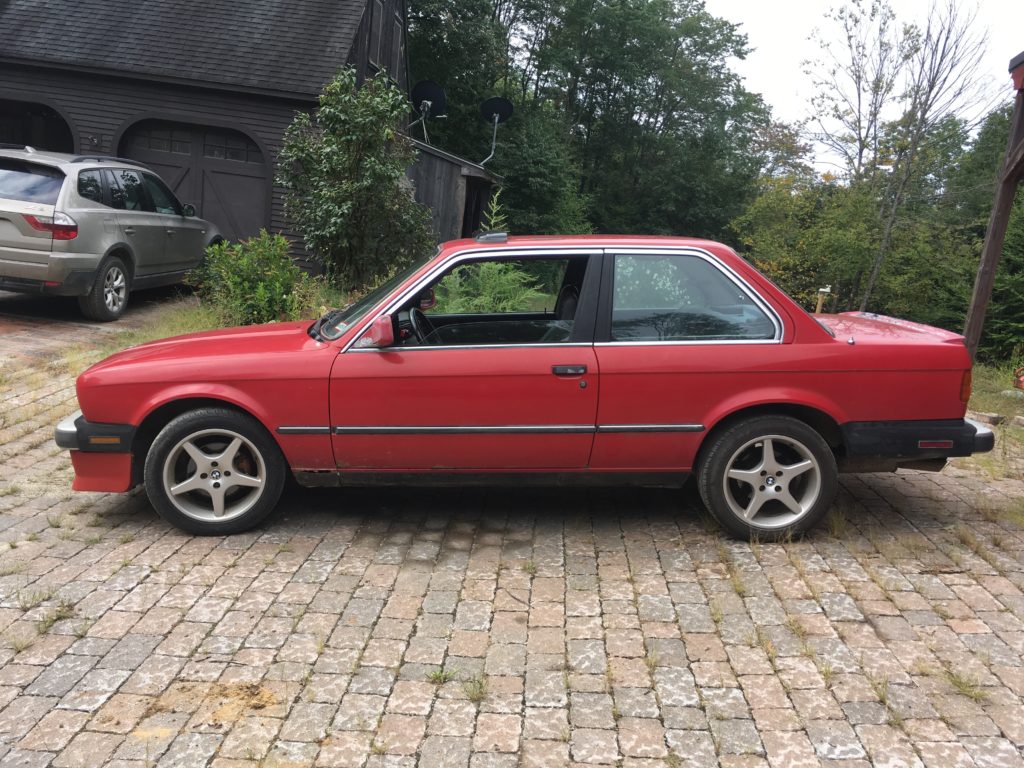
This would’ve made a fun winter beater, but the holes in the body made it uninspectable in Massachusetts.
My basic strategy for looking for cars is that nothing is as good as or even comes close to looking at a car yourself, laying your own eyes and hands on it. Anything that is within 150 miles and sounds promising, I’ll drop everything and check it out (it’s part of the advantage of being self-employed). If I then buy the car, it often means having to drive there twice—once to look at it and again to pick it up—but the ability to both pounce quickly as well as reduce risk has been, for me, a winning combination.
I also use Searchtempest—the multi-city version of Craigslist—but buying cars at a distance is tough. A car has to be dirt-cheap to offset the risk of not being there, or be in incredible condition at a really good price. But if something really is a steal, by the time you ask for and receive the photos you crave to offset risk, someone else has typically snatched it up. For example, I found another well-priced ’87 325is in Champagne Urbana that looked far more solid than the one in New Hampshire, but both the airfare out there and the shipping from there were expensive. While I looked at logistics and waited for photos of the underbody, the ad vanished from CL. Plus, there’s no protected payment mechanism on Craigslist as there is on eBay or Bring A Trailer, so you either need to develop trust with the seller or use an escrow service.
I prefer the former. After all, if I don’t trust a seller regarding the money, why would I trust him or her to truthfully represent the car?
Another strategy I employ is using CL to search in cities where I have either relatives or close friends. As I detail in Ran When Parked, the whole swoop-in-and-buy-a-cheap-needy-car thing really requires knowing someone within limping or towing distance so you can have somewhere to hole up for a day or two or seven, evaluate what you just bought, and address the car’s most pressing needs before praying to your gods and hitting the highway. A former colleague of mine lives in Tampa, so that city is in my search path; I’m certain you can understand why my Hack senses were a-tingling when I saw the following ad:
“Unmolested rare 1987 BMW 535i 5 speed transmission, has only 133,000 miles. Rare find, especially with a manual gearbox, Lama interior. This car does run and drive but needs tune up and front brakes. Does have minor surface rust and drivers seat needs repair, car is all power and everything works. 100% original, no modifications were done to this E28 except for new fuel tank, fuel pump & filter, new sensors were also changed out. Great candidate for full restoration, great bones. No accident history. $2250 obo.” (And yes, BMW spells the interior color “Lama” with one L.)
The photos weren’t great, but they appeared to show a whole intact car with only minor rust bubbles at the bottom of one door and on the sunroof. I don’t worship at the E28 altar, as many do, but you have to admit, this sounds pretty appealing.
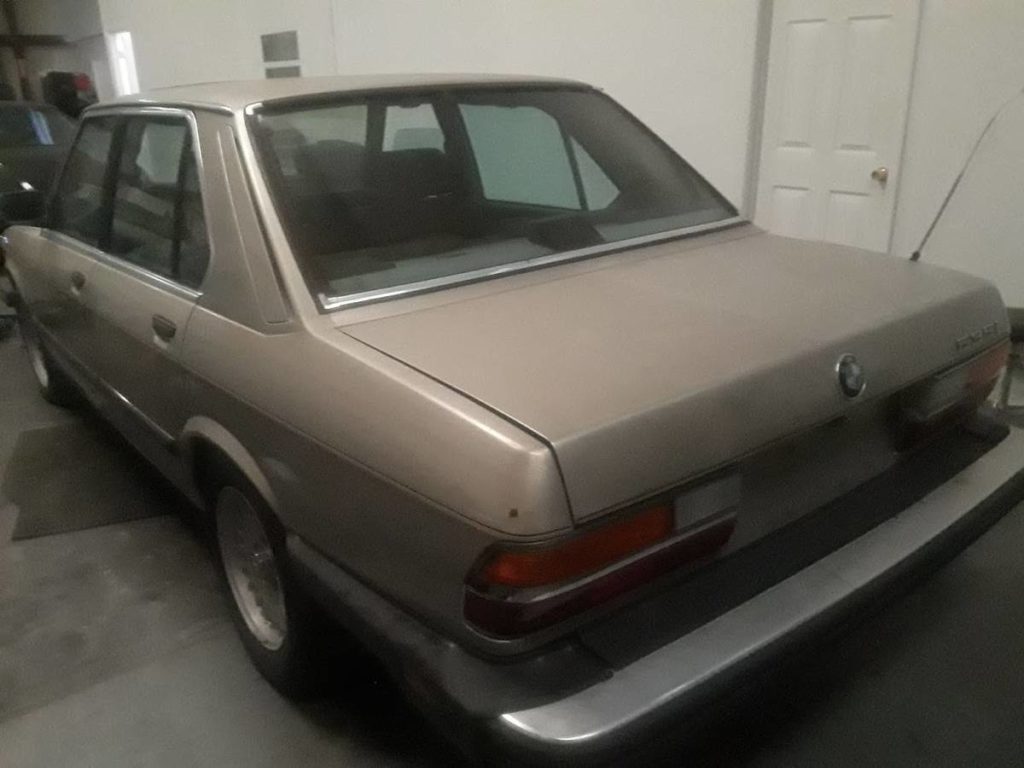
Why people don’t roll cars outside and photograph them in the sun is beyond me.
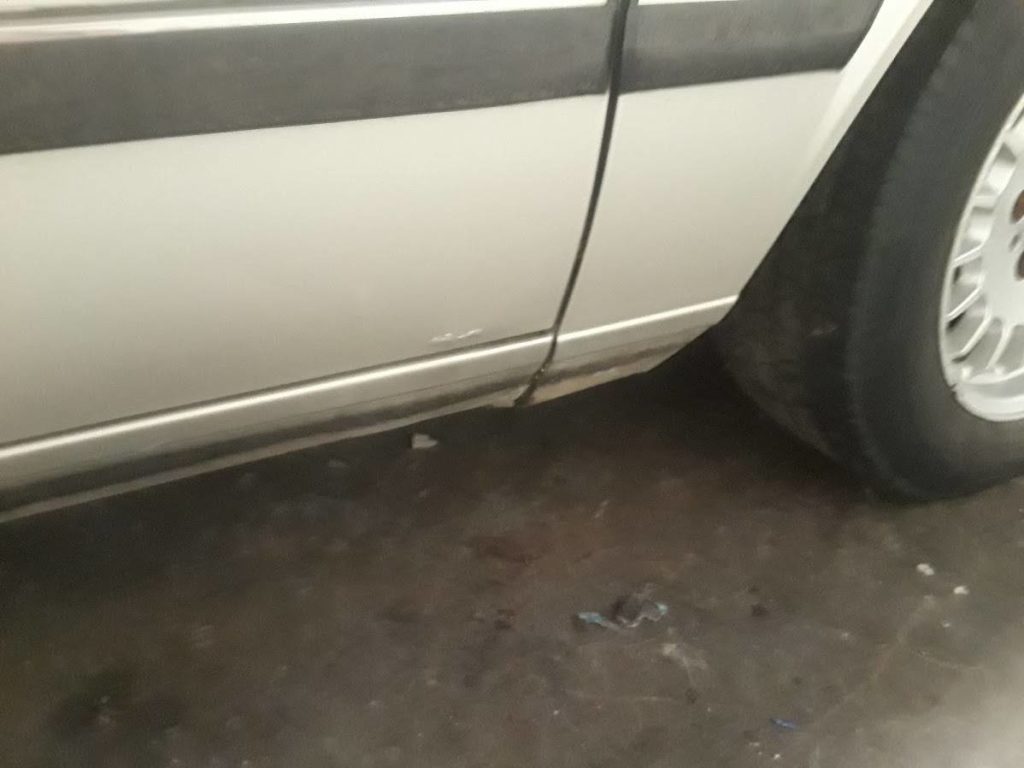
If this was the worst of the rust, damn.
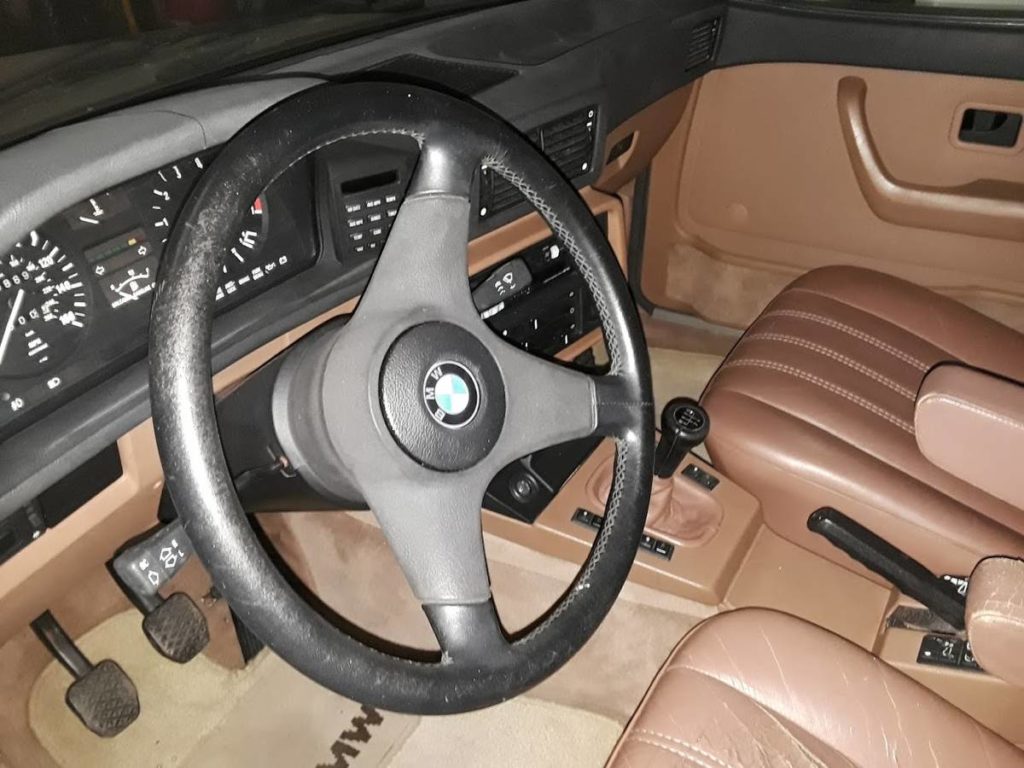
Lama. Yum.
I texted the seller (Gary) to get some additional info. We then chatted at length on the phone. The story was that the car had been owned by a gentleman who had passed away. It then sat garaged for five years. His grandson wound up with it, but didn’t really want it. Gary bought it and began sorting out the issues—hence the fuel-system replacement—but then found a mint Euro E28 he liked more. I ran a CarFax, it came up clean, corroborated the history, and showed that the car had lived in Florida its whole life. My interest ratcheted up several notches.
I told Gary that I’d consider flying down and driving the car back to Boston. He candidly advised that this was not a car I could buy, hop into, twist the key, and then pound out 1,300 miles in. At a minimum, the car was sitting on old TRX tires. Plus, he said, the car was running rough.
I asked whether it was rough at idle, at even throttle, at wide-open throttle, or all three. He replied that it was mostly rough at idle.
I asked him whether the small rust blisters shown in the ad were the worst of the rust on the car. He said that the right rear door had some rust on the inside of the curve where it closed against the rear wheel arch, but that was about it.
I asked how bad the un-photographed driver’s seat was. “Pretty bad,” he said.
I expected Lama guts—ripped leather and exposed springs and foam—but when he sent me a photo, it showed wear, as opposed to the seat being splayed wide open. He also said that he’d purchased a bunch of other parts, such as a 535is rear spoiler and a nicer-looking dash, and was planning on putting those on eBay, but that we could discuss including some or all with the purchase.
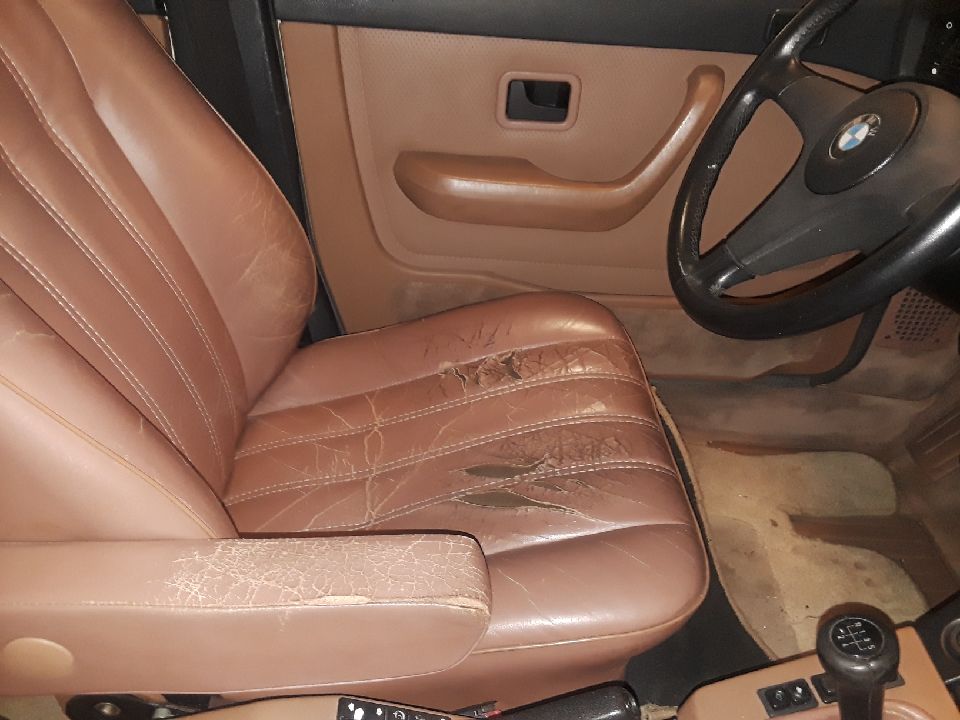
The Lama driver’s seat wasn’t as bad as I’d feared.
I thought about it that evening, e-mailed my friend Al in Tampa (he’s the ex-colleague with whom I did field geophysics for twenty years) to make sure I could crash at his place for a day or two or seven, then looked at airfare. Incredibly, there are $131 direct round trip fares on Spirit from Boston to Tampa with a seven-day advance purchase. That’s cheap enough that I could fly in and look at the car, and if I bought it, fine; and if not, I could just use the return ticket home.
With those logistics sussed out, I sent an e-mail to Gary with a carefully-constructed offer scenario I’ve used before to purchase cars at a distance. I offered him $2,000 for the car and the rear spoiler. I proposed a $75 non-refundable deposit, payable immediately via PayPal. I explained that what I’d do was to fly in on a cheap ticket and look at the car. If it was as described, I’d pay him the agreed-on two grand. But if it was not as described—if the rust was worse, if the paint was horribly sun-damaged, if the car couldn’t be driven to my friend Al’s—I wanted the right to walk away, surrender my $75 deposit, and get back on the plane.
However, I explained that even if I found things I didn’t like, I wouldn’t offer him less than the agreed-on $2,000. I’ve found that this is often an effective and fair way of combating the problem that sight-unseen offers are usually worth nothing, that when people show up in person, they often say, “Oh, I didn’t know about this, you didn’t tell me about that” and merely use the offer as the starting point for a new negotiation.
I re-read the e-mail multiple times, felt comfortable putting $216 at risk, and sent it off. I was so confident that nearly bought the plane ticket on Spirit, as there’s a 24-hour cancellation period, until I read the fine print and saw that this only applied to flights that were more than seven days out.
And then, that night, I slept terribly. It was the classic left-brain-right-brain split where it all made sense but somehow it didn’t feel right: Too far from home. Too long a drive. Too much risk. Too many other cars in the world. Too little lust for an E28. I thought about walking the e-mail back, but decided to wait for a response.
There wasn’t one. Maybe, I thought, he sold it to someone else. I was almost relieved.
Finally, about noon, Gary called me. It turned out that he hadn’t checked his e-mail, so he was unaware of my offer. I explained what I’d sent, then walked the offer back, and thought that was that.
However, to my surprise, we spoke for nearly an hour. During this conversation, Gary went into a lot more detail about why he thought I was being unrealistic in thinking that I could drive the E28 home to Boston. The car, he said, couldn’t really even be driven safely out the street. When it said in the ad that the car “needed front brakes,” I assumed that the rotors were chattering from deposits having formed from the pads while it sat, but Gary explained that the brake problems were more severe than that. The brake pedal, he said, was very soft, going nearly to the floor when the engine was off, and when the engine was on, the pedal felt incredibly hard and didn’t seem to be slowing the car. Further, he said that he’d just discovered that the car was leaking antifreeze.
To be clear, I didn’t think he’d withheld anything in the ad. To the contrary, I thought he was appropriately revealing information specific to my desire to buy it and drive it home as that conversation unfolded. I was grateful for his candor.
As we talked more, Gary explained that at this point, the money wasn’t really a big factor; he just needed the car gone. He had a nicer running E28, this one was taking up space in his business’ warehouse, and he was tired of the Craigslist kooks and the endless questions.
It was clear that he was encouraging me to make an offer.
One of my strengths in these situations is that I have no trouble changing hats. That is, even when I am interested in a car, I will tell the seller what I regard as the absolute truth regarding what it needs and what its value is, even if it undercuts my bargaining position. Then, a seller can decide for himself or herself what he or she want to do. My son Ethan refers to this as my “Hack Jedi” trick; I just think of it as truth breeding trust.
Gary asked me if I thought he should throw a few hundred dollars at the car, fix the antifreeze leak, bleed the brakes, and address the rough idle to help sell the car. I explained that a car is easiest to sell if it starts, runs, and stops, so yes, by all means, fix the antifreeze leak, but that the brake problem was unlikely to be solved by bleeding and was more likely a bad master cylinder and/or a bad brake bomb (hydraulic accumulator). I advised that, regarding the rough idle, most cars with M30 motors idle a bit rough; he or a shop could look for a split intake bellows or other obvious vacuum leak and check the idle-control valve, but if the car ran fine at even throttle and accelerated without stumbling, a rough idle was unlikely to move the value dramatically.
I advised that he had a very nice-looking E28; he shouldn’t give it away, and if it started, drove, and stopped, and if he rolled it out into the sun and took decent photos, it was probably worth at least four grand. Send me a photo, I said, of where it’s leaking coolant, drive the car in the parking lot to more accurately ascertain the braking situation, and report back to me.

This was the odd location of the coolant leak.
Gary sent me a pic of what appeared to be the point where the brake lines went through the plastic trim piece in the front of the left front fender and into the nose of the car. “This is where you’re seeing coolant?” I texted. He affirmed. I explained that the only coolant lines on the left side of the nose were the upper radiator hose and the small hose to the expansion tank, so odds were strong that either one of those hoses was loose or split, or the tank on the left side of the radiator was cracked.
About two minutes later, I received a gleeful text saying, “That was it! The small coolant hose was loose! Tightened the clamp, leak gone!” I joked that if I was going to make him a low offer for the car and put him out of his misery, I needed to do so now before we fixed the brakes via text messages.
Then I realized I wasn’t kidding. “Do it,” the less-risk-averse part of me sharply prodded.
I texted him that I’d PayPal him $1,000 for the car plus the rear spoiler immediately, and I’d pay to have the car towed to my friend Al’s to make it go away for him.
He quickly replied “How about $1,400 and I pay for the tow?” Done.
About an hour later, Gary texted me a photo of the title in a FedEx envelope with the tracking number, and I PayPalled him $1,400.
As I write this , the E28 is being towed to my friend Al’s house in Tampa. We’re trying to schedule a date in October when he’ll be there, I can fly in, have a visit, and suss out the car. I received the title yesterday, and made my call to Hagerty to insure the car. This kicked off the traditional exchange where they say, “Mr. Siegel, to add this car to your policy with a stated value of $5,000 will be an annual cost of $80,” and I say, “I love you guys!”
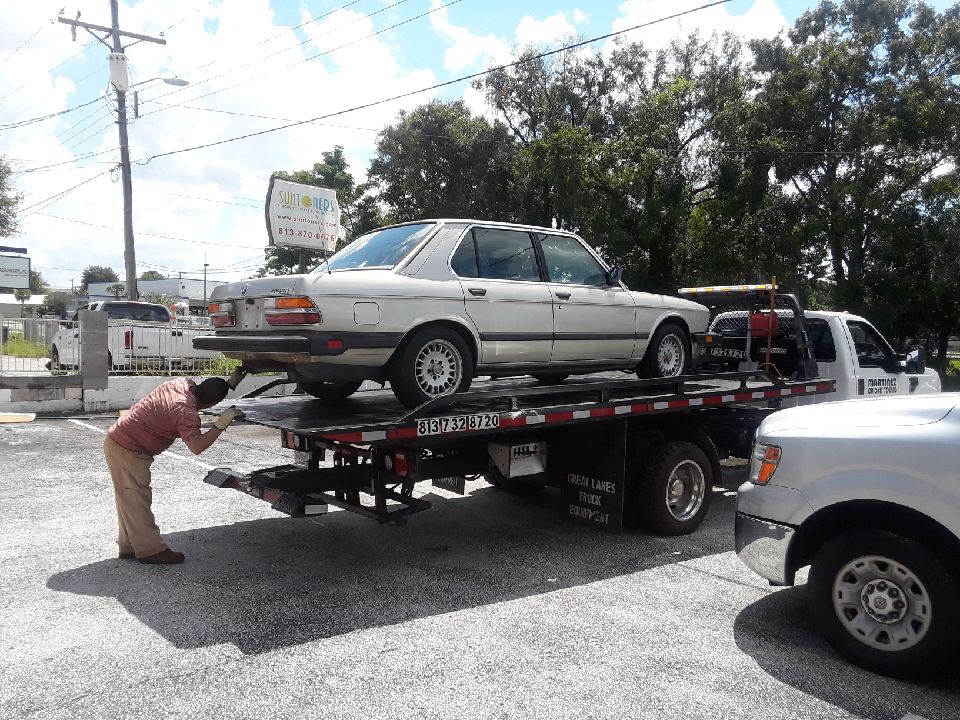
The E28 is on the way to my friend Al’s house. (Photo: Gary Thompson)
So the E28 Era has begun. Well, the second one; I had a 533i as a daily driver 30 years ago.
But the real question is: Can we keep making llama jokes even though Lama is spelled with only one L? And if so, if I cover the seat with a sheepskin, will it be cross-species interbreeding?—Rob Siegel
Rob’s new book, Just Needs a Recharge: The Hack MechanicTM Guide to Vintage Air Conditioning, is available here on Amazon. His previous book Ran When Parked is available here. Or you can order personally inscribed copies of all of his books through Rob’s website: www.robsiegel.com.

